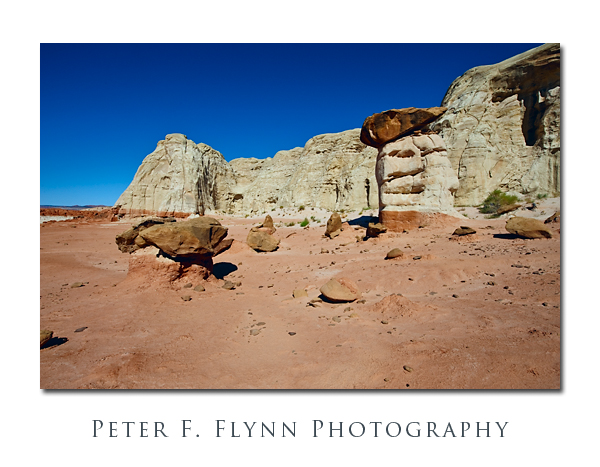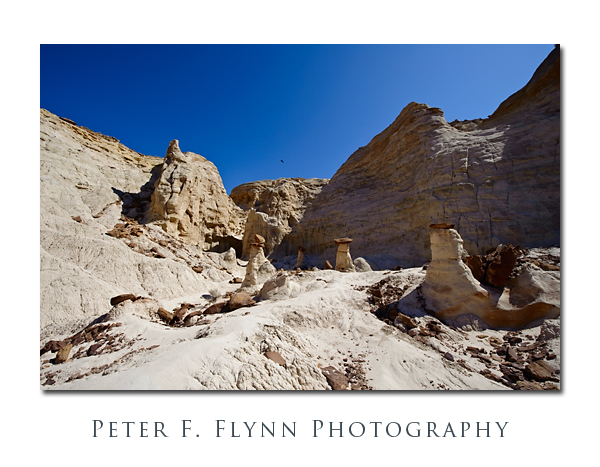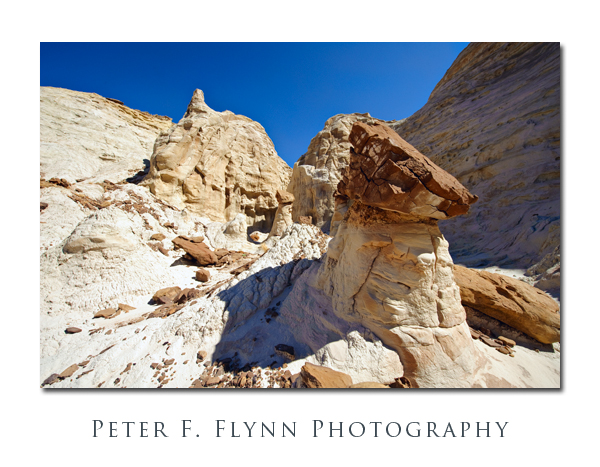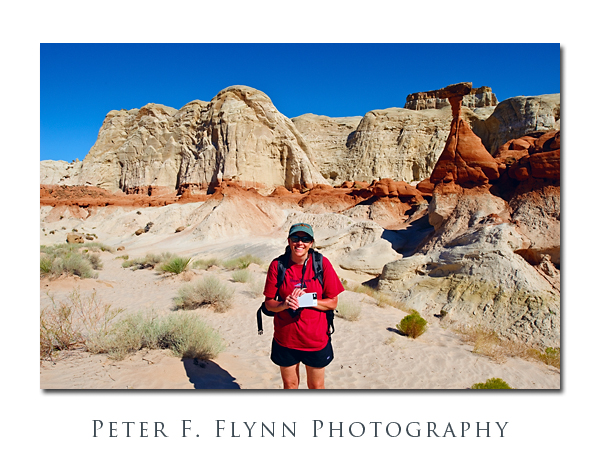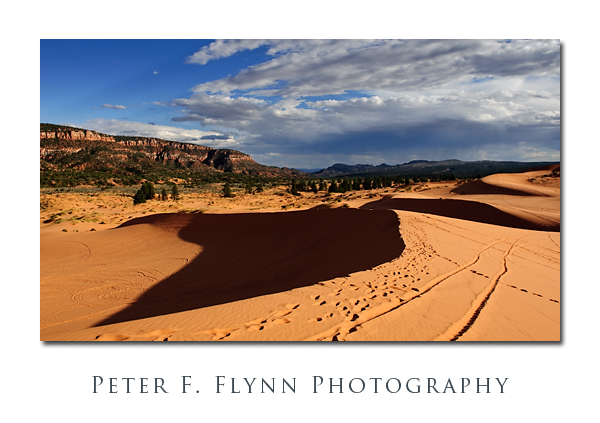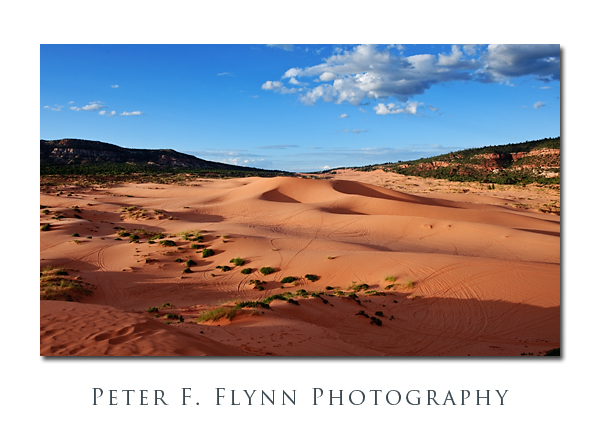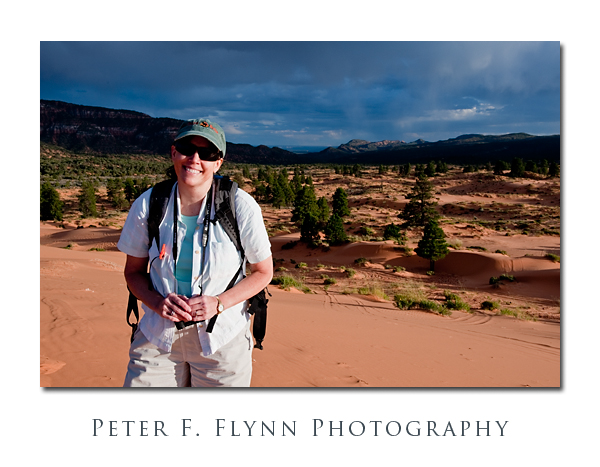Here’s a likely scenario… The lottery for permits into The Wave has just ended, and – whether lucky enough to snag a ticket or not – you are looking for something to do until the next day when your permit is valid or you have another go at getting a permit. It’ll be around 9:30 AM MST (not AST, remember you are still in Utah). The BLM ranger will be happy to suggest several hiking options, and provide you with a copy of an excellent hand-sketched map, annotated with some of the scenic highlights of the area.
One of the best of these options is the Rimrock Toadstool Trail, located in the extreme southern section of the Grand-Staircase-Escalante National Monument. The trail runs north from a small unsigned parking lot located along Highway 89, just 1.4 miles east of the BLM Ranger Station (aka The Paria Contact Station). It’s a short hike – about one mile, with lots of options for exploration – along flat terrain in a shallow wash that leads to a lovely wide bench underneath low cliffs. The sandstone in this area is composed of very soft, red, brown, and white sandstone formations, and the texture of the formations is reminiscent of that found in Goblin Valley State Park. The individual Toadstools range in size from about one meter tall to several meters in height; a few are of a dark reddish color (terracotta?), however most are white or light colored with dark brown or reddish capstones.
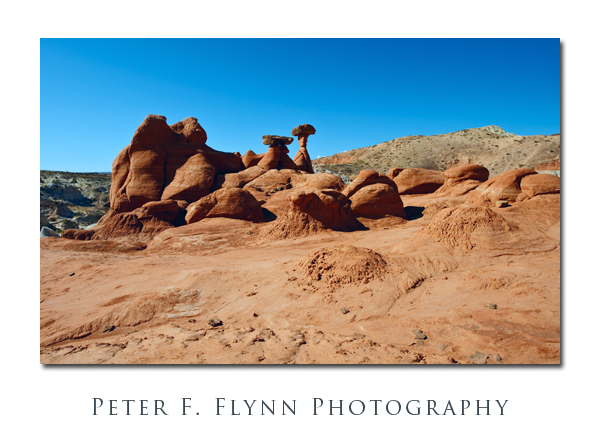 The image above, was recorded on August 26, 2009, at 10:30 MST, using the Nikon D700 and the AF-S NIKKOR 14-24mm f/2.8G ED at 21mm. Exposure was f/16 at 1/200s, with ISO set at 200. This set of Hoodoo/Toadstools is the first group encountered along the trail. The view here is looking south, back toward Highway 89.
The image above, was recorded on August 26, 2009, at 10:30 MST, using the Nikon D700 and the AF-S NIKKOR 14-24mm f/2.8G ED at 21mm. Exposure was f/16 at 1/200s, with ISO set at 200. This set of Hoodoo/Toadstools is the first group encountered along the trail. The view here is looking south, back toward Highway 89.
The image above was recorded on August 26, 2009, at 10:40 MST, using the Nikon D700 and the AF-S NIKKOR 14-24mm f/2.8G ED at 16mm. Exposure was f/16 at 1/320s (-0.67 EV), with ISO set at 200. This view shows the deep red color of the bench against the light, nearly white, color of the cliffs to the north.
The image above was recorded on August 26, 2009, at 11:15 MST, using the Nikon D700 and the AF-S NIKKOR 14-24mm f/2.8G ED at 14mm. Exposure was f/16 at 1/200s, with ISO set at 200. This alcove is in the northwestern corner of the valley – I favor this area best. Although it’s challenging to observe in this small image, there is a soaring bird recorded in flight near the center of the photograph.
The image above was recorded on August 26, 2009, at 11:18 MST, using the Nikon D700 and the AF-S NIKKOR 14-24mm f/2.8G ED at 14mm. Exposure was f/16 at 1/320s, with ISO set at 400. Handheld.
And of course, last, but certainly not least, here’s s snap of the HP conducting the WhiBal rights…
